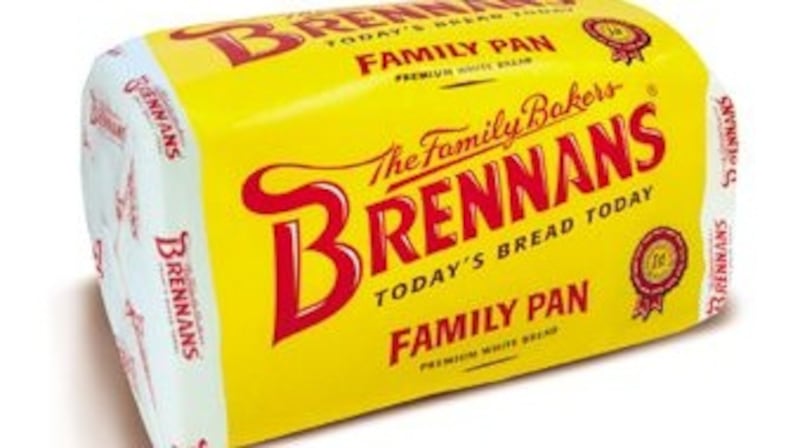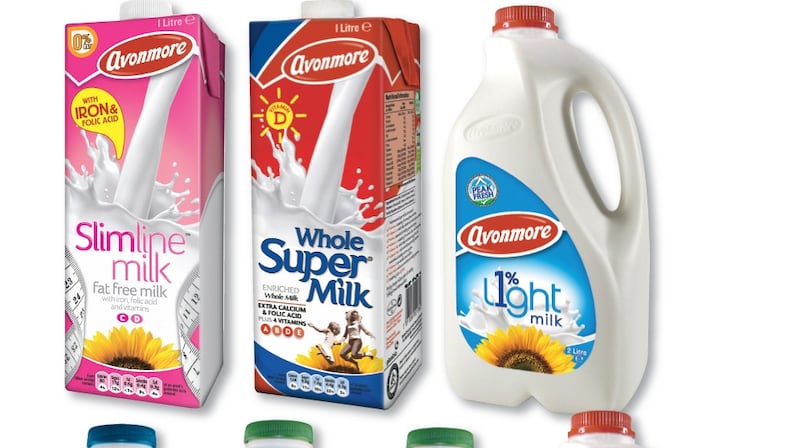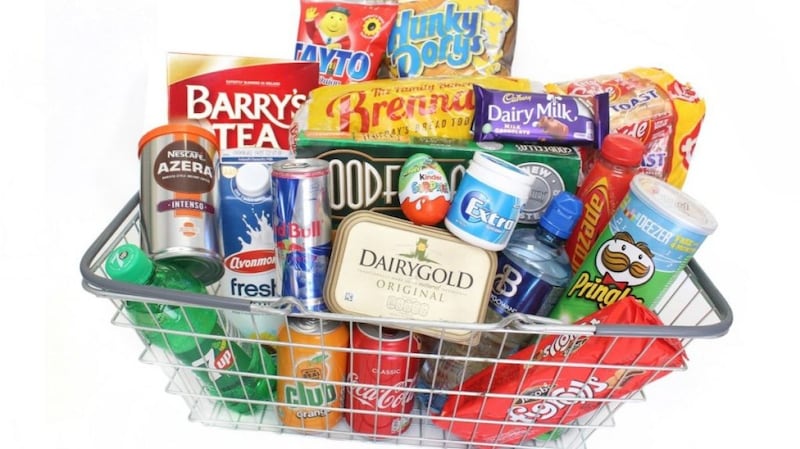If you find yourself struggling with a hangover this summer, you could do worse than look to the top five of a just-published list of favourite brands in Ireland to make you feel better. There is Brennans bread, Avonmore, Denny, Cadbury’s Dairy Milk and Tayto.
If the list is familiar to Irish consumers, it is probably even more familiar to the list makers at Shelflife and Kantar, the retail analysts. While the year we have all gone through may well be a year like no other – to borrow one of the many spirit-crushing phrases of the times we live in – it has been a year exactly like every other when it comes to the top brands Irish people have been spending money on.
Every year the trade publication works with Kantar to publish a top 100 brands in Ireland and every year Brennans bread and Avonmore jockey for position as top dog.
And so it is again this year. Despite all the upheaval caused by the great unpleasantness, there has been virtually no movement when it comes to our most beloved brands. The annual survey published on June 21st suggests that the bread people and the dairy folk are still slogging it out at the top of the pile.
That is not to say the list of 100 does not reflect changing times. It is not hard to understand why the brand which improved its position most this year was Dettol. It climbed an impressive 49 places in a single year. Other high climbers this year were Doritos and Magnum ice-cream. They climbed 33 and 31 places respectively, something which might shed some light why so many of us found our clothes shrinking – particularly around the tummy region – over the course of the crisis.
Another strong performer this year was Odlums which climbed 26 places as we turned into a nation of bored bakers. For its part, Tayto jumped a more modest three places although that was enough to see it climb into the top five. Coffee also saw a bounce. Nescafé, for instance, increased its footprint and jumped five places in the rankings making it into the top 20. It was the same across the coffee table. Instant brands recorded growth of 25 per cent while ground coffee and beans saw a jump of 28 per cent.
The editor of Shelflife, Gillian Hammill, says she is struck both by the changes and the things that never seem to change in this year’s survey.
“On some levels that aren’t that many huge surprises,” she says. “Both Brennans and Avonmore are so well respected. Brennans is familiar to everyone with its bright yellow packaging and Avonmore continues to innovate and it is always looking to launch new ranges. People do see the value of these brands when compared with own-brand and I think now more than ever people want to support local companies.”


She says she has been struck by the social solidarity people have shown while shopping in supermarkets over the course of the coronavirus crisis.
She reckons the rise of Dettol and Odlums was almost inevitable given what the country has endured over the past year or so. “I actually think the trend that has seen Dettol’s popularity increase so much is here to stay. People have seen the advantages of the greater hygiene measures even outside of Covid and they recognise the importance of safety measures when reducing the transmission of colds and flu.”
Hamill says the popularity of coffee at home is also likely to endure. “Before Covid, people had their takeaway coffee on their commute to work and it was a treat. When people were confined to their homes, a nice coffee was a bright spot during the lockdown tedium and a lot more people have coffee machines at home and are likely to be working from home more. That genie is out of the bottle and people have seen the greater flexibility of working from home so the popularity of coffee is also likely to endure.”
According to Dave Berry of Kantar, when the crisis was at one of its most frightening peaks in the middle of May 2020, household and cleaning products jumped by as much as 60 per cent when compared with the previous year. “The demand for hygiene products has remained strong for the last year and has continued into 2021,” he says.
He says another consistent has seen shoppers turning to supermarkets for “little luxuries” with take-home confectionery, take-home savouries and alcohol growing strongly over the year.
At its peak sales of home baking, ingredients rose 52 per cent while the core ingredients of Indian and Asian meals grew 41 per cent as shoppers found themselves with more time to recreate meals in home.
Odlums capitalised on the uptake of baking as a lockdown activity and managed to attract 338,000 new households to the brand, even at times struggling to keep up with the enormous demand from consumers. All told, 67.5 per cent of Irish shoppers have bought Odlums over the last year compared with 49 per cent in the previous 12 months.
According to Berry, Covid-19 has “made shopping local more important than ever before. We have seen throughout the course of the year and into 2021 that shoppers have made a conscious effort to support local convenience stores, supermarkets and even choosing local restaurants and pubs offering takeaway options.”

We can see a real desire among shoppers over the year to buy local
He suggests that for brands that wish to do well in post-pandemic times, it will be “vital to emphasise your role in the local community and in supporting the Irish economy. Since the early days of the pandemic, shoppers have stayed closer to home for their supermarket trips and have made a greater effort to support Irish brands. We can see a real desire among shoppers over the year to buy local.”
With working from home likely to continue at least to some degree into the future, Berry suggests it will “undoubtedly cause a longer term shift in spend away from hospitality and on-the-go outlets and categories. Coffee, which was previously a mainstay of commuter life, likely to be picked up at cafes in city centres, was brought back into the home during the pandemic. We have seen shoppers looking to recreate their coffee occasions at home and everyone tried their hand at becoming a barista.”
How the data is complied
It is always worth looking at how data it complied. Shelflife and Kantar relied on data sourced from 5,000 “demographically representative Irish households” who all recorded their take-home groceries.
The study comprised more than 200 so-called fast-moving consumer goods categories which are recorded by Kantar on a continuous basis – including those in the beverages, food, health and beauty and home and care sectors. The list is based on a measure of how many households purchased a brand at least once during the year (penetration), and the average number of times households bought the brand (frequency).
The two numbers were then multiplied to calculate each brand’s Consumer Reach Points (CRP) score. The report covers a 52-week period between the end of October 2019 and the end of the same month in 2020.
Kantar contacted respondents on average at least twice a week and provided households with barcode scanners in order to scan the goods they had purchased for at-home consumption.
The data does not reflect food purchased and eaten out of the home. Impulse pack products have been excluded from the data set while batteries, tobacco, nappies and alcohol were all similarly excluded.
The Top 20
- Brennans
- Avonmore
- Denny
- Cadbury
- Tayto
- Jacob
- Knorr
- Coca-Cola
- Heinz
- Irish Pride
- Birds Eye
- Mueller
- Johnston Mooney and O'Brien
- Keelings
- Pat the Baker
- Batchelors
- McVities
- Cadbury
- Nescafé
- Yoplait
Pricewatch essentials
While the Shelflife/Kantar study is commendably scientific – if exhausting sounding for participants who had to scan all their shopping and talk to researchers about what they bought twice a week – it is not the only game in town.
Pricewatch wanted in on the action so last week we conducted a dramatically less scientific and far easier piece of “research”. Basically we asked Twitter what brands would they want to take with them should they ever find themselves banished to the Skelligs.
The response was predictably massive with people anxious to give a shout-out for their favourite brands. Perhaps equally predictably there was a lot of love for booze. Gin, whiskey, stout, rum and cold pints of Smithwicks all got a mention as people displayed a worrying lack of understanding of what they might need to keep themselves going on the cold and unforgiving rocks off the southwest coast.
Helen Curran said she would stock her imaginary boat with Coca-Cola, Cadbury, Tayto, Avonmore milk, Barry’s Tea, pink lady apples, Brennans bread and Kerrygold butter – ingredients with which, to her credit, she could live some class of healthy life.
The same cannot be said for Barbara Elliott who told us she would pack “any Barry’s Tea, any Cadbury’s chocolate and a mega mega box/bag/crate of gourmet jelly beans from the Jelly Bean Factory. Think I’ve covered all the food groups there,” she concluded.
The choices made by Margaret Young were worse. She opted to pack Marmite or peanut butter. We should be grateful she didn’t decide to pack Marmite AND peanut butter as a more vile combination we can’t even begin to imagine.
Therese Doyle said she would leave for the Skelligs with only Diet Coke in the case. “I swear it’s laced with something they’ll find out someday because it’s addictive,” she insisted.
Vicki Notaro Carlyle was in a different class altogether with her choices. She told us she would head off with “Glenstall butter, Manhattan crisps/popcorn, Brennans bread, Veuve Clicquot, Pasqa rosé, Cadbury’s, Avonmore milk, Mutti polpa, Kilmeaden cheese, De Cecco pasta, Barry’s Tea, anything from Toonsbridge, Clonakilty meats, Fitzgerald’s bagels.” She concludes by saying, simply: “Oooh that’d be lovely!” There is no argument from this side of the street that’s for sure.
If I'm being banished to Skellig Michael to live as a monk, I'd probably just take a few bottles of Dingle whiskey to ease the burden
For her part, Kim Porcelli also said she would bring De Cecco, “Pastina for kid soups, ditali for pasta e ceci, conchigliette for most other purposes. Like, if everything else had to be cheapie brands, I’d stick with De Cecco for pasta. Plus 250 Square’s Billy No Buzz coffee.” Then she added that she has what she called “a low-key obsession with a bread brand called Crusty O’Sullivan. I love their sourdough so much I once FB messaged them to say thank you. (Tragically, they’re not very active on FB.) I joke about how Mr O’Sullivan is my one true love. My six-year-old cradles the loaves like babies.” We’ve not heard of Crusty O’Sullivan but we will definitely be looking out for it now.
Dave Docherty went for “Starbars. Bacon and eggs in every combination thinkable,” while Marie O’Callaghan told us she would bring “cheese, everything from Sheridans plus artisan crackers. Aldi for vino. Dunnes Stores sour dough and Barry’s loose tea leaves, for the morning after the night before.”
“Lord save us,” said a Twitter used called Shevaunne. “If I’m being banished to Skellig Michael to live as a monk, I’d probably just take a few bottles of Dingle whiskey to ease the burden.”
At least she is keeping it local. And it is a very fine whiskey indeed.
Grace Rattigan said she would pack “full-fat Coca-Cola, King crisps, Kerrygold [and] Staffords Bakery Turnover” while Fiona McDonagh went for “Tortilla chips. Homemade guacamole and hummus. Organic red wine.” She also asked if she could bring Spotify but we are not sure how good the broadband is out on Skelling Michael.
Linda Ni Flaitheartaí opted for the nation’s favourite, Brennans bread, as well as Kerrygold and Superquinn sausages while Sarah Herron would not leave home without “Ballymaloe diced Irish beetroot. Could live happily on it with some cheese and bread and maybe.”
And finally there was Ciarán Kavanagh who said he would go with “a double Whopper and a bladder of Château L’Hospitalet. Nothing like a complete rounded diet.”













